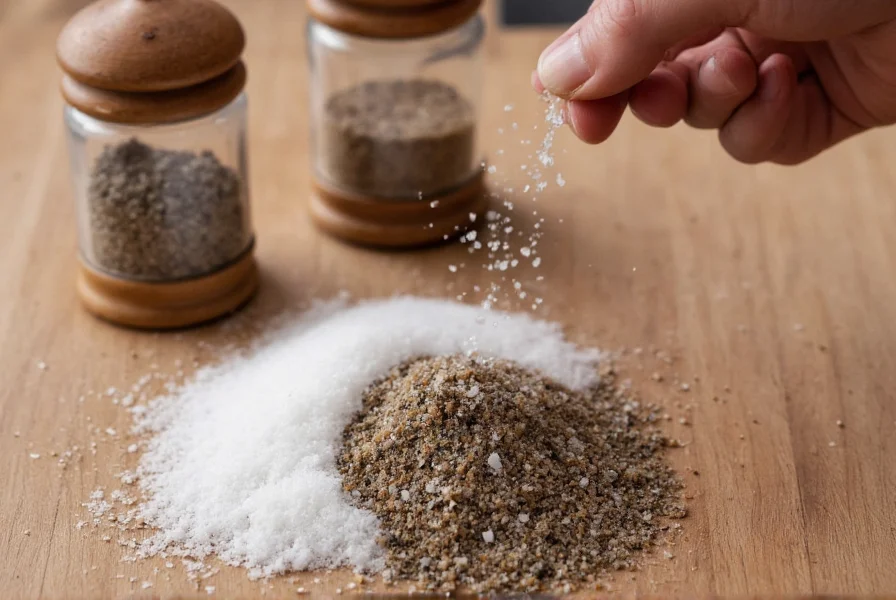The salt and pepper push it represents one of the most elegant yet technically demanding moves in partner Latin dancing. This signature casino-style movement creates that distinctive 'push-pull' dynamic that makes Cuban salsa so visually captivating. Unlike standard cross-body leads, the salt and pepper variation incorporates a subtle contra-body motion that generates rotational momentum while keeping partners connected through the frame.
Origins and Cultural Context
Emerging from Havana's vibrant dance halls in the 1950s, the salt and pepper push it evolved as dancers sought more fluid transitions between basic steps and complex turn patterns. The name likely references the alternating 'salt' (leader's action) and 'pepper' (follower's response) dynamic that characterizes the move. In authentic Cuban casino dancing, this move appears frequently in guapea sequences and dile que no patterns, serving as both a practical transition and expressive element.
Anatomy of the Salt and Pepper Push It
Understanding this move requires breaking down its four critical components:
| Component | Leader's Action | Follower's Response |
|---|---|---|
| Preparation (beat 5) | Collect weight, slight contra-body motion | Maintain connection, prepare for lead |
| Initiation (beat 6) | Gentle push through right arm, left foot forward | Accept lead, begin counter-clockwise rotation |
| Execution (beat 7) | Complete turn, maintain frame tension | Controlled rotation around own axis |
| Resolution (beat 8) | Collect weight, reset connection | Complete turn, establish new position |
Mastering Proper Technique
Many dancers struggle with the salt and pepper push it because they misunderstand its core mechanics. The 'push' isn't a literal shove but rather a controlled transfer of energy through the connection point. Leaders should focus on initiating movement from their center rather than their arms, while followers must maintain proper frame tension without resisting the lead.
For Cuban salsa dancers seeking authentic salt and pepper push it execution, pay special attention to your footwork timing. Unlike linear salsa styles, casino dancing requires the follower to complete their rotation within the musical phrase without rushing. The ideal salt and pepper push it for beginners maintains consistent weight transfers without compromising the characteristic Cuban motion.
Common Mistakes and Corrections
Dancers frequently make these errors when attempting the salt and pepper push it:
- Over-rotation: Followers spinning beyond the intended position. Solution: Leaders should modulate push strength based on follower's frame
- Broken connection: Arms collapsing during the move. Solution: Maintain consistent frame tension through shoulder blades
- Timing issues: Rushing the rotation. Solution: Practice counting musical beats aloud while executing
- Poor weight transfer: Stomping or sliding feet. Solution: Focus on clean weight changes with each step
Progression Exercises
Build proficiency with these salt and pepper push it practice drills:
- Practice the move in place without music to perfect weight transfers
- Execute with eyes closed to enhance connection awareness
- Try variations with different hand positions (open break, double hand)
- Incorporate into full dile que no sequences with musical phrasing
Advanced dancers can explore creative salt and pepper push it variations by incorporating body rolls, syncopated timing, or combining with other casino moves like enchufla or pancake. Remember that the most elegant executions maintain the move's fundamental mechanics while adding personal expression.
Integrating Into Your Dance Vocabulary
The salt and pepper push it shines when used as both transition and expressive element. In social dancing, incorporate it after basic steps when the music builds to a crescendo. For performance routines, pair it with complementary moves like exhibela or setenta to create dynamic visual patterns. The authentic salt and pepper push it for social dancing prioritizes connection over flashiness, making it equally valuable for beginners and advanced dancers.
Frequently Asked Questions
What's the difference between salt and pepper push it and regular cross-body lead?
The salt and pepper push it incorporates contra-body motion and rotational energy that creates a distinctive 'push-pull' dynamic, whereas standard cross-body leads follow a more linear path. The salt and pepper variation maintains continuous connection throughout the move with specific weight transfers on beats 5-8, creating that signature casino-style flow.
How can I prevent my partner from over-rotating during the salt and pepper push it?
Leaders should focus on initiating the move from their center rather than their arms, using subtle frame tension instead of forceful pushing. Practice with a 'soft hand' technique where you maintain connection without gripping. The most effective salt and pepper push it execution uses minimal physical input for maximum rotational effect through proper timing and body mechanics.
Is the salt and pepper push it used in other dance styles besides casino salsa?
While originating in Cuban casino, the salt and pepper push it has influenced LA-style and New York-style salsa with adapted variations. You'll also find similar mechanics in bachata's cross-body leads and certain kizomba patterns, though the authentic salt and pepper push it maintains distinctive Cuban characteristics including specific weight transfers and contra-body motion not found in other styles.
What musical timing works best for the salt and pepper push it?
The traditional salt and pepper push it aligns with beats 5-6-7-8 in salsa music, creating that characteristic 'wrap' before the downbeat. Advanced dancers sometimes syncopate the move across different musical phrases, but beginners should master the standard timing first. The most musical salt and pepper push it executions match the move's rotational energy to the conga's tumbao pattern for authentic Cuban expression.
How long does it typically take to master the salt and pepper push it?
Most dancers achieve basic proficiency with the salt and pepper push it after 4-6 weeks of regular practice. Complete mastery with musicality and styling typically requires 3-6 months. The authentic salt and pepper push it for social dancing develops gradually as dancers internalize the subtle connection cues and timing nuances that make this move so distinctive in casino-style salsa.











 浙公网安备
33010002000092号
浙公网安备
33010002000092号 浙B2-20120091-4
浙B2-20120091-4